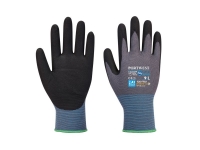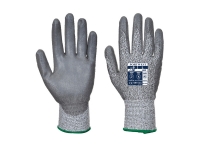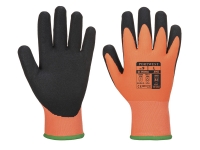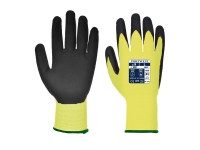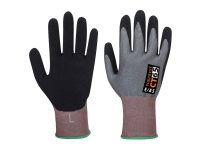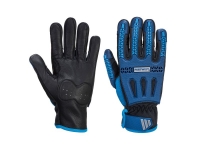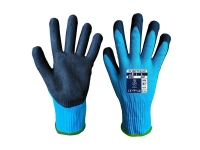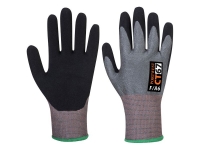Cut Resistant Gloves
Wide Variety of High Quality ANSI Cut Resistant Gloves.
Additional Information
The new ANSI scale, characterized by an ‘A’ in front of level numbers, is as follows:
A1 - Protective gloves, Level 1: withstands 200 g to 499 g of cutting load
A2 - Protective gloves, Level 2: withstands 500 g to 999 g of cutting load
A3 - Protective gloves, Level 3: withstands 1000 g to 1499 g of cutting load
A4 - Protective gloves, Level 4: withstands 1500 g to 2199 g of cutting load
A5 - Protective gloves, Level 5: withstands 2200 g to 2999 g of cutting load
A6 - Protective gloves, Level 6: withstands 3000 g to 3999 g of cutting load
A7 - Protective gloves, Level 7: withstands 4000 g to 4999 g of cutting load
A8 - Protective gloves, Level 8: withstands 5000 g to 5999 g of cutting load
A9 - Protective gloves, Level 9: withstands 6000 g or more of cutting load
In 2017, over 42% of nonfatal occupational injuries in the upper extremities involved the hands. Plus, these injuries cost businesses anywhere from $540 to $26,000.
What if we told you that you could save yourself the trouble (and money)? Well, this is possible through cut-resistant gloves.
In this article, we'll discuss the types of anti-cut gloves available and all the reasons why you need to get a pair for yourself.
Types of Cut-Proof Gloves
In general, there are 3 types of cut resistant gloves: metal mesh, cut-and-sewn, and seamless knitted. We'll tell you more about each one below so you can get a good idea of which type(s) would be good for your work environment.
Metal Mesh
Metal mesh gloves are made of multiple rings of stainless steel connected together. Overall, they form a chainmail-like surface. These are best used for extreme cutting hazards, such as food prep or heavy metal stamping.
Because the metal is made in such a way, it'll prevent any heavy tools or knives from penetrating the gloves. However, it can be a bit more cumbersome than other materials, so if you need to be quite nimble at your job, then metal mesh might not be the ideal anti-cut gloves for you.
Cut-And-Sewn
Cut-and-sewn gloves are ones that combine conventional glove materials with cut-resistant ones. Usually, the palm area is lined with the cut-resistant material, but some also cover the entire thing.
Because no metal is used, cut-and-sewn gloves can fit your hands much better, making it more easy to manipulate items and tools in your hands.
Seamless Knitted
Seamless knitted gloves are made entirely of one material. In fact, as the name suggests, they're knitted as one piece.
You might think that knitted gloves aren't as strong as other cut-resistant gloves, but you'd be wrong! This is because they use high-performance materials, such as PVA yarn, ultra-high molecular weight polyethylene (UHMWPE), or Para-aramid (under the brand names Twaron or Kevlar, which you probably recognize).
Cut Level Gloves
Not all gloves are made equally. There's something called the cut level of gloves.
There are 2 standards: one is in North America and the other is in Europe and Asia. For the purpose of this article, we'll only talk about the North American standard.
The North American standard is ANSI/ISEA 105-2016. This standard rates the cut-resistant properties of the gloves, which means when you buy cut-resistant ones, they can have a cut level of anywhere between 1 to 9. 1 is the weakest while 9 is the strongest.
To ensure that all the results from the glove testing are uniform, all gloves rated by the ANSI/ISEA 105-2016 are tested on a TDM-100 machine.
The Testing Process
First, a sample of the glove is cut and then placed on a conductive strip. Then, it's loaded onto the TMD-100 machine. The machine is then fitted with both a straight blade and weight.
Next, the blade moves across the glove fabric. The fabric is tested a total of 5 times; each time, there are 3 different loads.
In the end, the tester records how far the blade moved to cut the glove fabric at different measures of force. With this data, they'll then calculate the exact load needed to cut through the fabric.
Based on the cut-through load, the glove is then given a rating between A1 and A9.
The Importance of Using Cut-Resistant Gloves
Though you may have thorough safety training at your workplace, it still doesn't guarantee that accidents won't happen. This can be especially true if you frequently work with things like extremely hot or cold items, sharp objects, chemicals, and biological agents.
Human error is inevitable, so you want to be prepared when it happens. Here are all the ways you can benefit from having cut-resistant gloves.
Reduced Overhead Costs
Remember that statistic from the introduction? You can be paying up to $26,000 or even more per injury! As a small business owner, this can be a devastating blow should your employees get hurt while on the job.
Not only do you have to pay out in worker's compensation, but you'll also lose labor for a while as they recover. Plus, decreased morale in the workplace from an injured coworker can cause a decrease in production for your other employees.
Even if you're just an independent contractor, having an affordable pain of cut-resistant gloves can decrease the chance of you being wounded seriously enough that you have to take days off. A bit of prevention goes a long way.
More Employee Trust
If you're a business owner, spending just a little bit on cut-resistant gloves can make all the difference. When they see that you care about their well-being while on the job, this can improve their morale and motivate them to be more productive while remaining safe.
Choose the Right Ones for the Task
As you saw from earlier, not all cut-resistant gloves are made the same. For instance, if you work with needles, then your needs will be different than if you work with large knives.
Make sure you assess your situation carefully and don't just buy any cut-resistant glove, as a random one may not offer adequate protection.
Purchase Cut-Resistant Gloves Today
Cut-resistant work gloves can be a wonderful investment. As you can see, having a pair of cut-resistant gloves can prevent many scenarios from happening and can help raise the safety standards in your workplace.
Considering each pair of gloves isn't very expensive, it's not something that'll set you back either. So whether you're an independent contractor or a small business owner, it shouldn't be very hard to find some money in your budget to purchase this important type of protective gear. In fact, it will probably save you money in the long run!
Do you want to buy cut-resistant gloves for yourself or other workers? Then get our maximum level ones today!


